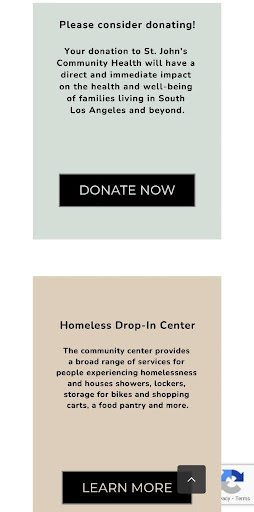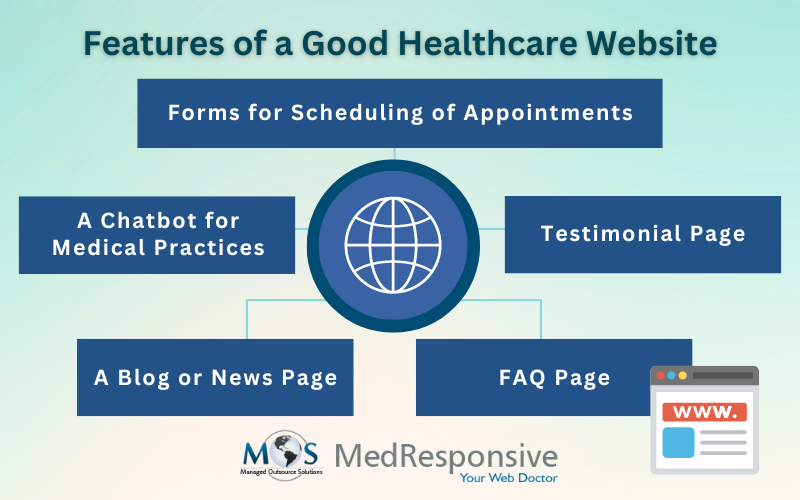Today, healthcare providers must leverage technology to enhance patient engagement and active connection. A mobile-friendly website is a crucial tool for achieving this goal. With an increasing number of patients using smartphones and tablets to access healthcare information, a mobile-optimized site ensures that your practice remains accessible and engaging. Coupled with organic SEO services, a mobile-friendly website can significantly boost your online presence and patient interactions.
New technologies that prioritize speed, ease, and dependability in administration are emerging, such as digital billing solutions, patient apps, and online scheduling. Patients want their modern medical office to provide options for them to be involved in managing their healthcare, whether they are at home or on the go.
Here are some statistics:
- 43% of millennials said they would rather use a smartphone to access patient portals. A 2014 Xerox analysis indicates that in 2021, this figure will undoubtedly be higher.
- Although nearly 90% of providers offer patient portals, real portal use hovers between 15% and 30%. Experts believe that mobile access will increase this percentage.
- In 2020, it was projected that around 50% of Americans were interacting with their healthcare professionals via technology. (Medical.Net)
- 77% of consumers look through internet reviews before choosing a new doctor. (Software Advice)
- According to 82% of patients, the most crucial consideration when selecting a healthcare provider is great customer service (Silverline).
- The patient engagement solutions market in the United States was estimated to be worth USD 5.16 billion in 2021. From 2022 to 2030, it is expected to increase at a compound annual growth rate (CAGR) of 15.1%. (Grand View Research)
How Mobile Technology Improves Patient Engagement and Activation
A Pew Research Center study found that up to 85% of American adults own a smartphone, up from 81% in 2019, which makes mobile an ideal option for video meetings with physicians. Mobile technology helps healthcare providers support patient engagement in their health and promotes informed decision making.
- Helps overcome connectivity challenges: The healthcare industry is facing severe staffing shortages which can disrupt care. The Association of American Medical Colleges estimates that there will be shortage of about 37,800 to 124,000 primary and specialty-care physicians by 2034. Mobile technology provides the solution to this challenge by allowing providers and patients to connect with each other seamlessly. Patients can use their smartphones to find healthcare providers to quickly send secure messages, schedule appointments, and receive notifications. Patients can get notifications directly on their mobile devices. This can ensure proper and timely care for many common health conditions. Chronic disease self-management apps designed for smartphones have increased patient engagement, providing quick and easy access to data, medication schedules, and calendars. Using tablets, hospitals and medical practices can simplify patient data collection and storage, and save time spent on administration and in waiting rooms.
- Integrates with wearables: Wearables such as smartwatches, smart glasses, and other fitness trackers allow patients to track their sleep, calculate calories, track workouts, and even detect early signs of diabetes, and encourage a healthy lifestyle. These devices seamlessly integrate with mobile health apps and support patient monitoring, surveillance, screening, diagnosis, and help with treatment, post-treatment, and ongoing management. Providers or nurse practitioners can use mobile apps to prescribe drugs or send reminders on taking medications, do exercise, etc. This is especially helpful for elderly people in nursing homes and to support those who are at home but are particularly vulnerable to health issues.
- Supports telehealth: Mobile devices work along with telehealth to improve patient engagement and boost care delivery and outcomes – without any physical contact. Many ailments such as migraines, skin conditions, diabetes, depression, anxiety, colds, coughs and infectious diseases like COVID-19, can be reviewed and treated via telehealth.
- Enables access to patient portals: Patient portals are shown to improve adherence to medications and streamline patient-provider communication. They allow patients to access their medical histories and care plans, track medications and allergies, allow users to review and update their medications, and also alert their providers about any errors in their electronic medical records (EMRs). Mobile devices provide patients quick access to their electronic patient portal. Patient portal apps make digital bill payment easy. Patients can also use mobile apps to complete pre-visit assessments and reduce the amount of time they need to spend in the physician’s office. The Health Information National Trends Survey (HINTS) reported that nearly four in 10 patient portal users accessed their portal through a smartphone health app in 2020.
- Reduces costs: Online or mobile consultations also save money for both patients and providers. With digital consults, patients can save travel costs and avoid revisits with timely care. Providers can benefit from lower operational and practice visit costs.
Build a Mobile-friendly Website to Optimize Patient Engagement
Patients who access healthcare websites from mobile devices should have an experience optimized for the device. A mobile-friendly website is one that ensures a good user experience on mobile devices, which is crucial to help users find your website and also to engage with them effectively. A search engine optimization company that specializes in medical SEO can ensure that your website is optimized for mobile users. This involves ensuring that your pages load fast and display well on different screen sizes.
We are experts in providing website development services, specializing in building mobile websites for healthcare providers that work seamlessly on smartphones, tablets, and computers. SEO experts will work with you to assess the type of resources that patients require from your website and provide a customized solution.
Healthcare providers should ensure the following specific features and best practices for a mobile-friendly website:
- Create a responsive layout with CSS media queries, adaptable images, and fluid grids. By doing this, you can be guaranteed that the text, graphics, and navigation on the website will all dynamically adapt to accommodate various screen sizes and orientations.
- For quicker loading times on mobile devices, reduce the size and improve the quality of photos and multimedia material. To present images that are the right size for the user’s device resolution, employ responsive image approaches.
- Make all buttons and navigation components touch-friendly and simple to use on smaller screens.
- Consider integrating Google’s Accelerated Mobile Pages (AMP) framework into practice. It produces streamlined, light versions of websites that load more quickly on mobile devices.
- Conduct research on healthcare and local keywords. To improve your website’s exposure in local mobile searches, incorporate location-based keywords (such as city, neighborhood, and surrounding landmarks) into the content, meta descriptions, titles, and headings.
- To draw in local patients, concentrate on long-tail keywords that express particular healthcare services and local purpose.
- Make sure your Google My Business profile is correct and comprehensive for your healthcare practice. Give current contact details, such as name, location, phone number, business hours, services rendered, and clear photos.
- Verify that the NAP information for the practice is correct and corresponds with information found in other local directories, including Yelp, Healthgrades, and the Yellow Pages.
- Concise and powerful messaging should be created to effectively communicate information on mobile displays. To convey the important facts quickly, use attention-grabbing headlines and subheadings.
- For simple browsing and comprehension, divide the text into manageable bits using brief paragraphs and bullet points.
- Apply responsive design concepts to make content mobile-friendly.
- As more and more searches on mobile devices are voice-based, be sure your content is optimized for voice search inquiries. To better fit with the way voice assistants analyze and give information, think about developing healthcare content in the form of questions and answers.
- Change the HTTP to HTTPS protocol to secure the healthcare website. To protect the security and integrity of patient data during transmission between a user’s browser and your server, get an SSL/TLS certificate.
- Perform routine security audits on the healthcare facility to find weak points and make sure best practices are being followed.
- Given the dynamic nature of mobile trends and user behavior, mobile SEO requires continual monitoring and changing based on performance data. Frequent observation enables real-time evaluation of mobile website performance.
Key Features All Healthcare Practices Websites Must Have
- Forms for Scheduling of Appointments: Appointment scheduling is made easier with the use of forms. Your patients will be able to provide you their contact details, choose a time that works best for them, and even ask for information about their insurance right away. You can also obtain personal information using forms rather than needing to do it in person. Those who have filled out forms can even be invited to subscribe to a mailing list, which will keep them informed of any updates or modifications to your practice.
- A chatbot for medical practices: The main reason why many medical practices utilize chatbots is to give their patients round-the-clock assistance, regardless of the time of the day. Chatbots have shown to be a useful tool for answering patient inquiries and raising client satisfaction levels.
- Testimonial Page: A crucial component of your medical website is the testimonials section. It builds trust and offers your visitors an idea of what to expect from you. Patients can feel less alone on their path to better health when they visit a testimonial page. It also proves that other people have profited from your practice. Remember that patients read testimonials to learn about other people’s experiences with you, not just how wonderful it sounds in theory or even whether they would save money! You want readers of this part to trust you and be confident about your capabilities.
- Have a blog or news page: Regular content publication that is pertinent to your medical practice shows off your subject-matter expertise and maintains visitor interest. Try to post on your blog once a week, and try to incorporate pictures or videos. The number of people that a piece of content reaches is what really counts, and sharing pieces on social media platforms like Facebook, Twitter, and Instagram is a terrific way to increase that number.
- FAQ page: For patients who are interested in learning more about your office or who have never visited it before, FAQ page is an invaluable source of information. You might want to start a whole new topic or section dedicated to answering these particular questions regarding your clinic. Office hours, payment options, insurance accepted or denied, parking availability (if relevant), etc. are a few excellent subjects to cover.
SEO experts will use Google’s Mobile Friendly Test to carry out a mobile site test and obtain your website’s score in terms of mobile responsiveness and make appropriate modifications to improve the mobile experience if Google detects there are possible improvements. Investing in digital patient engagement tools and medical SEO services will help you build a mobile-friendly website that drives patient engagement and activation, and provide the best care possible. It will also increase your return on investment by improving user satisfaction and increasing visits and referrals.
A reliable digital marketing services company focused on healthcare and everything medical, has extensive expertise in mobile SEO. We can help you build a mobile-friendly website that your patients can easily find and engage with effectively.






